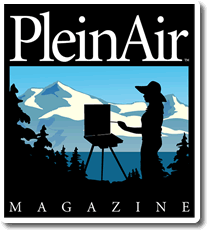Florida artist Joseph Palmerio helps us navigate the benefits and particulars of being an artist in residence in a national park.
There are approximately 29 U.S. national parks that participate in artist-in-residence programs that bring painters, sculptors, printmakers, poets, musicians, photographers, and writers to the parks. Listings of the various National Parks residencies can be found on the U.S. National Park Service website. Each national park has its own application process, and most residencies run from two to four weeks during the spring or fall months. It is important to follow the application procedures exactly as outlined. Applicants will usually be asked to submit six to 10 digital photos of their work; insufficient or excessive materials will be cause for rejection. Depending on the park, artists will have to wait anywhere from a few months to a year to find out if they have been selected.
In October 2003, Florida artist Joseph Palmerio served as an artist in residence in the Everglades National Park, and in 2011, he accepted another residency, at the Great Sand Dunes National Park & Preserve in Colorado. Housing was provided, as well as an adjoining space he could use as a studio. Pets are not allowed in most cases, but Palmerio was allowed to bring his two dogs to the Great Sand Dunes residency because he resided in his own travel trailer. Transportation to and from the park must be provided by the artist, and each resident must provide his or her own groceries. More often than not, housing is fully furnished, including linens and kitchenware. No stipend is provided.
The parks select between three and 10 artists per year, and it’s most likely that a panel from diverse artistic disciplines will choose the finalists. One can expect a short orientation upon arriving at the park, and most require the artist to contribute in some way to the visitor program while in residence. Activities are based on the strengths and talents of the artist. For his participation, Palmerio provided live painting demonstrations at the visitors’ centers. He was also invited to exhibit his work in the parks later in the year.
Finally, parks will ask the artist to donate an original piece of work from, and representative of, the residency experience. Usually, the park will require the artist to submit donated pieces within a year of the residency. Palmerio completed a 24 x 30-inch plein air oil painting that he framed and presented to the park on his last day of residency.
(Due to the age of this post, some images may be missing from this article. Visit our home page at OutdoorPainter.com to view the latest posts.)




